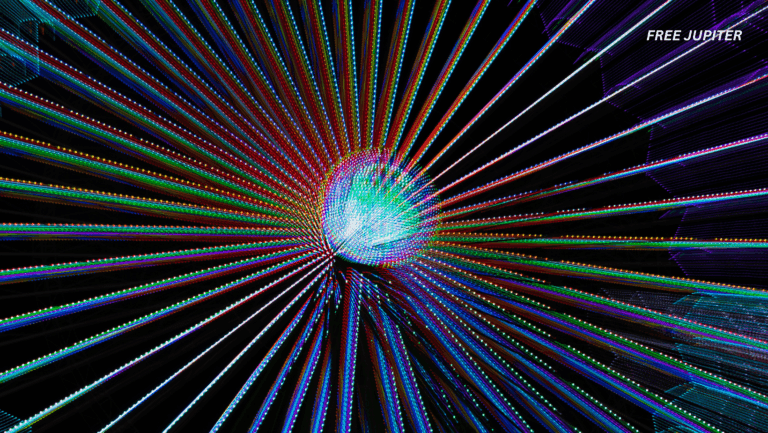Friendly Note: FreeJupiter.com shares general info for curious minds 🌟 Please fact-check all claims—and always check health matters with a professional 💙
Teleportation isn’t just for starships and sci-fi anymore. Thanks to a steady stream of mind-bending discoveries, the concept of “beaming” information across space—without physically moving anything—is inching its way into real-world science. No, we’re not quite ready to zap people from New York to Tokyo, but the building blocks of quantum teleportation are falling into place, one atom at a time.
Welcome to the wild and wonderful world of quantum physics, where reality gets weird, and scientists are starting to tame the chaos.
What Is Quantum Teleportation, Anyway?
First, let’s get one thing straight: quantum teleportation isn’t about moving objects (or people) from point A to point B. Instead, it’s about copying the state of a teeny-tiny particle—like a photon or electron—and transmitting that exact “identity” somewhere else, without physically moving the original. It’s kind of like faxing a particle’s personality across space.
This scientific sorcery is made possible through quantum entanglement, a bizarre connection between particles where whatever happens to one instantly affects the other—even if they’re miles (or even light-years) apart. Einstein called it “spooky action at a distance,” and honestly, that name still fits.
1,200 Kilometers? No Problem
Back in April 2022, a Chinese team led by physicist Dr. Jian-Wei Pan made headlines by pulling off one of the biggest teleportation stunts yet: sending quantum information over a whopping 1,200 kilometers. How? With the help of Micius, a special satellite that creates pairs of entangled photons (light particles) and beams one to Earth while keeping the other in orbit.
When one photon is tampered with down here, its twin in space instantly mirrors the change. No wires, no delay—just pure quantum magic. This kind of communication could one day connect the entire globe in a super-secure quantum internet.
Read more: Scientists Say More Animals Are Conscious Than We Ever Imagined—Even Insects
Diamond-Powered Data Hops
Meanwhile, scientists in the Netherlands made a splash by using diamonds to teleport quantum data between two Earth-based network points. Think of it like sending a message between two supercomputers without losing a single digital drop.
Using special bits of information called qubits—which are like normal computer bits but way more powerful—the team achieved 90% accuracy. That’s a huge win for those dreaming of an unhackable, lightning-fast internet. According to project lead Dr. Ronald Hanson, this shows a quantum network is not just possible, but probable.
When Noise Makes Things Better (Seriously)
You’d think unwanted interference—or “noise”—would ruin teleportation. But researchers from China and Finland recently discovered something weird: certain types of noise might actually help with teleportation. By using a technique called multipartite hybrid entanglement (a fancy way of saying they mixed different properties of particles), they managed near-perfect results—even in messy, noisy conditions.
In June 2024, another Chinese team pushed this even further by getting 90% teleportation success, despite environmental interference. They did it by mixing photons’ polarization (how they vibrate) with their frequencies (how fast they vibrate). That’s like harmonizing a symphony in the middle of a thunderstorm—and still nailing every note.
Going Beyond Three Dimensions
Teleportation isn’t just getting stronger—it’s getting smarter. In late 2024, researchers from Beijing came up with a way to teleport information across multiple dimensions. Most experiments focus on one dimension at a time, but these scientists managed to do it in three, which means more complex, data-rich quantum communication could be just around the corner.
Teleportation as a Traffic Cop?
Oddly enough, teleportation is also helping with “quantum routing”—essentially deciding where quantum information goes. A team from the University of Maryland and the University of Cambridge showed that teleportation can be used to re-route information more efficiently than current methods. Think of it as swapping out your city’s traffic lights for teleporting drones that direct traffic instantly and flawlessly.
Read more: Close Your Hand—This Fist Test Could Reveal Surprising Truths About Your Personality
Why This Matters in the Real World
Let’s talk real-life impact.
Imagine an internet where hackers can’t snoop—at all. Quantum communication is basically spy-proof, because any attempt to eavesdrop messes up the entangled particles and immediately raises the alarm. This kind of security is a dream come true for banks, hospitals, military operations, and even your own personal data.
The European Union is already working toward a continent-wide quantum network by 2030. If it works, it could change cybersecurity forever.
And then there’s quantum computing. These aren’t your average computers—they’re more like brainy aliens that can solve problems in seconds that would take regular computers thousands of years. Teleportation helps connect different quantum processors without physical wires, allowing them to “talk” to each other instantly, even if they’re in separate labs.
Dr. David Schuster and his team at the University of Chicago are already doing this, linking quantum processors with entangled photons. It’s one step closer to a supercomputer that could transform fields like medicine, artificial intelligence, and materials science.
Still a Long Way to Go
Now, let’s not get ahead of ourselves. While the progress is dazzling, there are some serious obstacles to tackle.
One big issue is decoherence, where quantum information fades due to outside influences like heat or magnetic fields. Maintaining the delicate balance of entanglement isn’t easy—kind of like trying to keep a soap bubble intact in a wind tunnel.
Then there’s the problem of distance. Fiber-optic cables lose signal over long stretches, and while satellites like Micius help, we’re still far from having a worldwide system. The most likely solution? A combo of space-based links and earthbound cables—essentially, a quantum hybrid highway.
Also, this stuff isn’t cheap. Quantum research requires mega-budgets and highly specialized gear. Government funding helps—like the U.S. National Quantum Initiative, which has poured over $1 billion into the field—but widespread adoption will take time (and a lot more cash).
Quantum Teleportation and the Big Cosmic Questions
Beyond computers and communication, teleportation is opening new doors in physics itself. Some researchers believe that quantum entanglement could help solve cosmic mysteries—like what really happens inside black holes.
Caltech’s Dr. John Preskill suggests that these teleportation experiments might shed light on the so-called “information paradox,” where scientists debate what happens to data swallowed by black holes. According to him, quantum experiments are not just science—“they’re windows into the nature of reality itself.”
And while we’re still in the “what if” phase, some physicists are toying with the idea of teleporting energy instead of just information. That would revolutionize power grids and possibly let us beam energy across the planet with minimal waste.
Read more: NASA’s James Webb Telescope Directly Photographs Saturn-Like Exoplanet For The First Time
The Bottom Line: From Fantasy to Foundation
Teleportation might not beam you to work just yet, but it’s already transforming the digital and scientific landscape. The breakthroughs led by Pan, Hanson, Schuster, and others are chipping away at the limits of distance, speed, and security.
We’re witnessing the early stages of a quantum revolution—one that could soon power your internet, protect your data, and reshape how we understand the universe.
Teleportation may have started as a sci-fi fantasy. Today, it’s becoming the foundation for the future.










